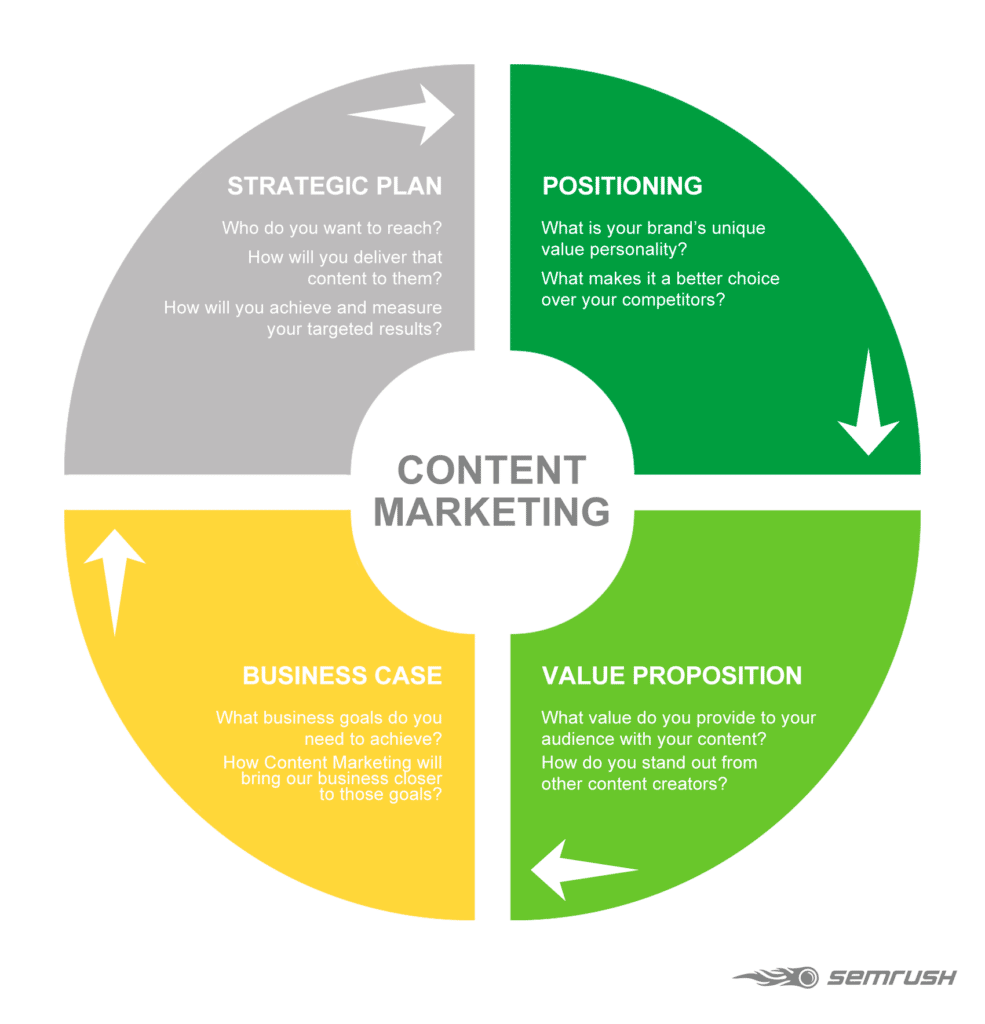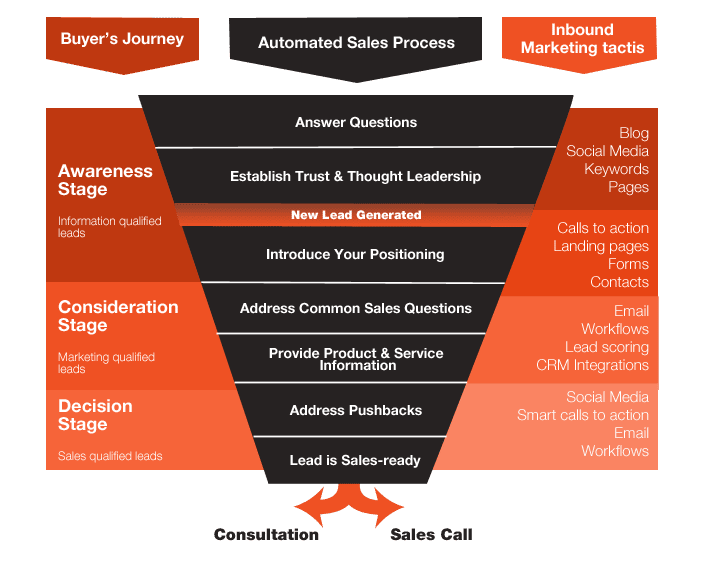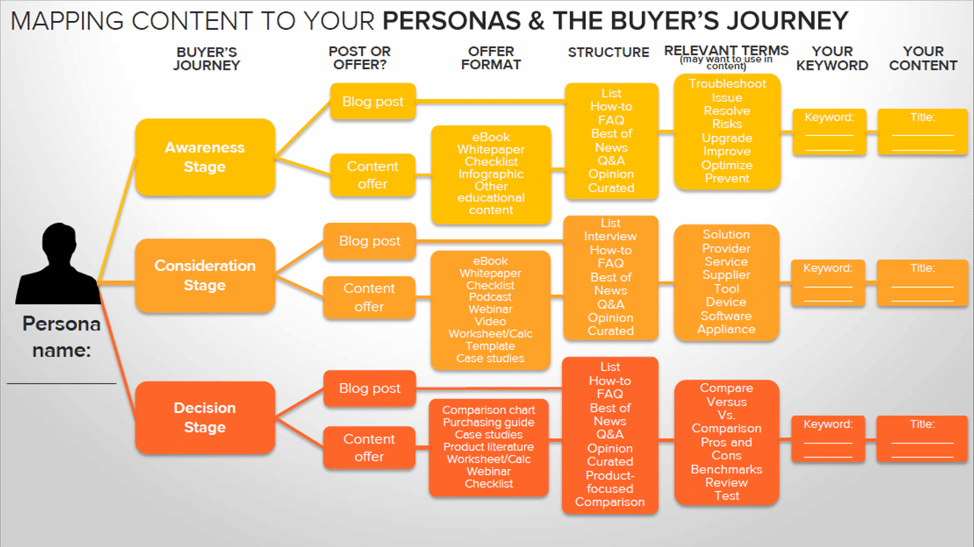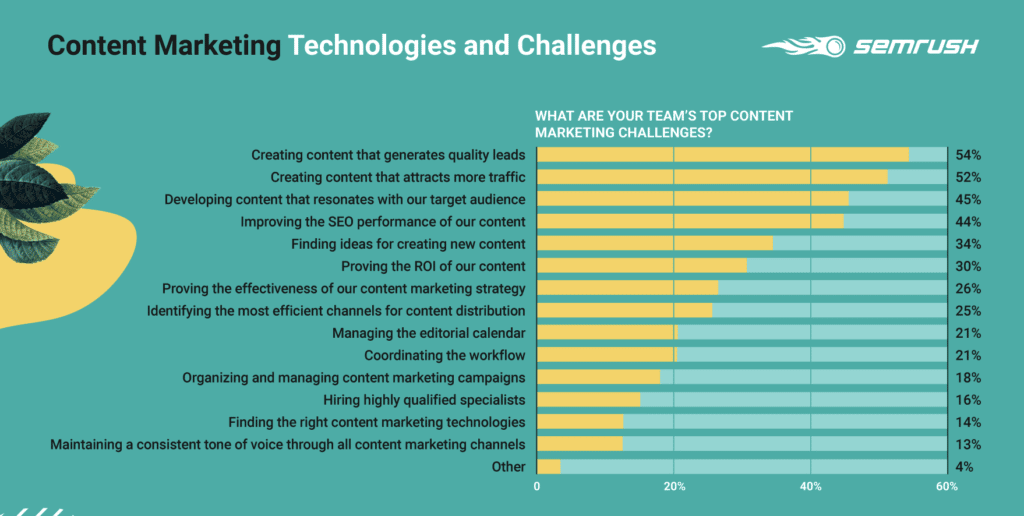Running a company that’s geared toward attracting B2B customers can feel intimidating, especially when it comes to generating quality leads and funneling them into sales.
The biggest challenge with the B2B space is that the typical sales cycle can take anywhere from 6 months to sometimes 24 months. Having content to help both marketing and sales along the way can shorten this cycle; however, know that it goes beyond simply publishing a blog post or a white paper.
Here’s the major challenge that many of the clients who come to me deal with: They don’t know how to leverage content marketing to truly attract and engage with their target customers.
So where should you start?
Well, let’s paint an all-too-common scenario: You’re the CMO (chief marketing officer) or CRO (chief revenue officer) for a company, and your job is to do the following:
- Build awareness for the products and services your company is selling. Air cover plays an integral role with generating the right leads and interest.
- Develop and create content assets your target customers actually want to consume. A study around content marketing shows that 65% of marketers say their challenge is producing engaging content, 62% don’t know how to measure the ROI of their content assets, and 60% say they can’t produce content consistently.
- Increase pipeline and sales enablement.
- Grow retention, push for customer advocacy for new sales referrals, and much more.
The growing list for marketers, business owners, and side hustlers alike to promote and sell their products and services can feel overwhelming.
Luckily, today’s blog post will cover specifics on how you can attract new customers with your B2B content marketing. So let’s get going…
Start with a Simple Content Strategy
63% of businesses don’t have a documented content strategy, which can make it difficult to execute properly and ensure full alignment among sales, marketing, and even product.
In order to be effective, you have to develop a simple content strategy that supports your overall business objectives. Departments can certainly set goals and track KPIs that matter to them, but there should be an overarching theme everyone is striving toward.

Aside from knowing “who” you’re going after and developing personas around that, I think it’s equally important to decide the following:
- What you’ll be writing about.
- Who is going to help with the content development and production processes.
- The purpose of each asset that’s going to be produced.
- Where each asset falls within the marketing funnel itself.
- Indicators for success that are reported weekly, monthly, and quarterly.
Ensuring that you’re flexible but also intentional with how content is produced, the cadence, and overall expectations will help drive success.
Map Out the Buyer Journey
There are a lot of different ways to do this. Here’s an example of what the buyer journey may look like when aligned with the sales funnel:

I like to look at it a bit more myopically once there is alignment on goals ― meaning everyone in the company is on the same page as far as the number of leads that need to be generated to get the number of closed sales that will then determine revenue and profit.
With all of this in mind, the next logical step is to lay out marketing’s initiatives alongside the buyer journey, as such:

Knowing the type of content the buyer is most interested in based on their life cycle stage and their engagement level will help you better personalize their path to purchase. This in turn makes it easier for sales to also begin a conversation because 82% of buyers view 5–8 pieces of content before buying, and 74% do half of their research online before buying.
Identify Success Metrics
Having clear KPIs that you’ll be tracking specifically for content aligning with the overall marketing objectives will help you be more successful. This will paint a clearer path of what you’re trying to do, why it matters, and who it’s for.
The most cited content marketing goals are:
- 75% want to generate quality leads
- 86% want to build brand awareness
- 79% intend to educate their audience
- 75% expect their content to build credibility and trust
With that in mind, it’s also important to highlight that the biggest challenge for many businesses continues to be that they can’t seem to generate the number of quality leads needed to fill the pipeline.

Here are some metrics I recommend tracking to understand whether or not the content assets you develop are actually moving the needle:
- Growth in organic traffic to blog and targeted assets.
- Growth in paid traffic to blog and targeted assets.
- For paid, know the CPL and CPA.
- Visit to lead %.
- Lead to customer %.
- Top performing content pieces based on time-on-site and engagement.
- Close rate for leads who come through from the content and are nurtured.
Get Active on LinkedIn
LinkedIn is an amazing place to network digitally. The problem is that more and more people are using it for cold social selling.
It’s clear that it’s now another sales tool, and for many who aren’t having success using LinkedIn to generate leads, it’s because they are taking the “what’s in it for me?” approach rather than being helpful and inquisitive to learn about a potential buyer’s pain points. To be clear, I’ve been guilty of this too.
From my experience, two years ago it was a lot easier to do a cold outreach via InMail and get a response, but I think now people are getting inundated more and more with these types of messages. To stand out, you have to take the approach of really wanting to help.
A combination of running ads on LinkedIn and direct outreach with helpful content is a great place to start. Here are some stats to know:
- Sponsored InMail has a 52% open rate.
- 89% of B2B marketers use LinkedIn to generate leads.
- 59% of sales professionals count on LinkedIn to drive revenue.
- 80% of B2B leads come from LinkedIn.
Final Thoughts
Know that there isn’t just one way to yield a positive ROI with content marketing. What’s most important is to ensure that you are developing a good marketing road map that adopts a growth hacking approach. In other words, you are clear on initiatives and are willing to test to see what works best.
The companies I have seen succeed with their content marketing efforts are the ones who have a deep understanding of how to marry SEO with searcher intent. This narrows in on the content their target buyers want to consume before speaking to a sales rep.
So to quickly recap, make sure you have a solid strategy in place, you’re mapping content to the buyer journey, and you’re leveraging data to help you make the best decisions as you continue executing.






2 Responses